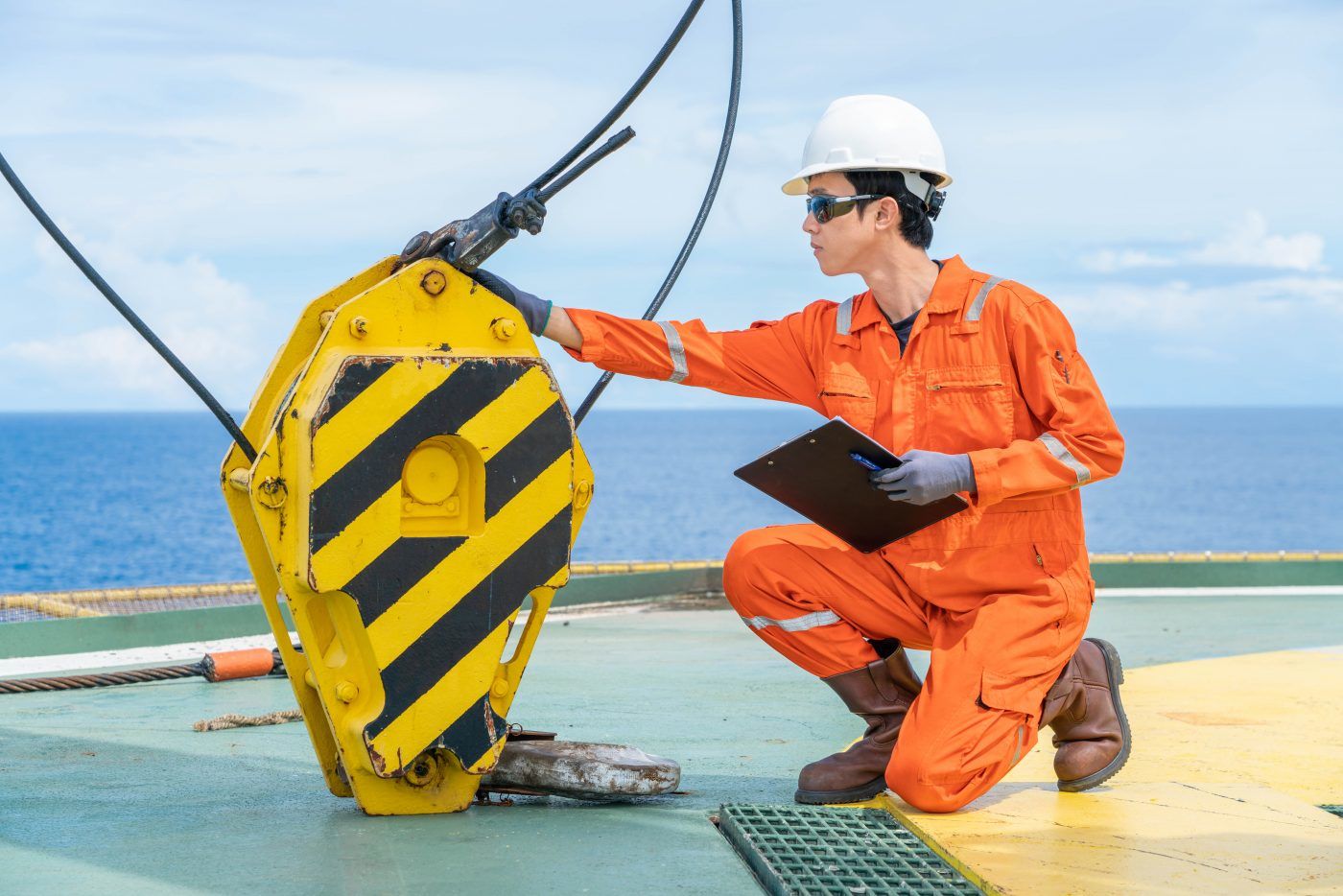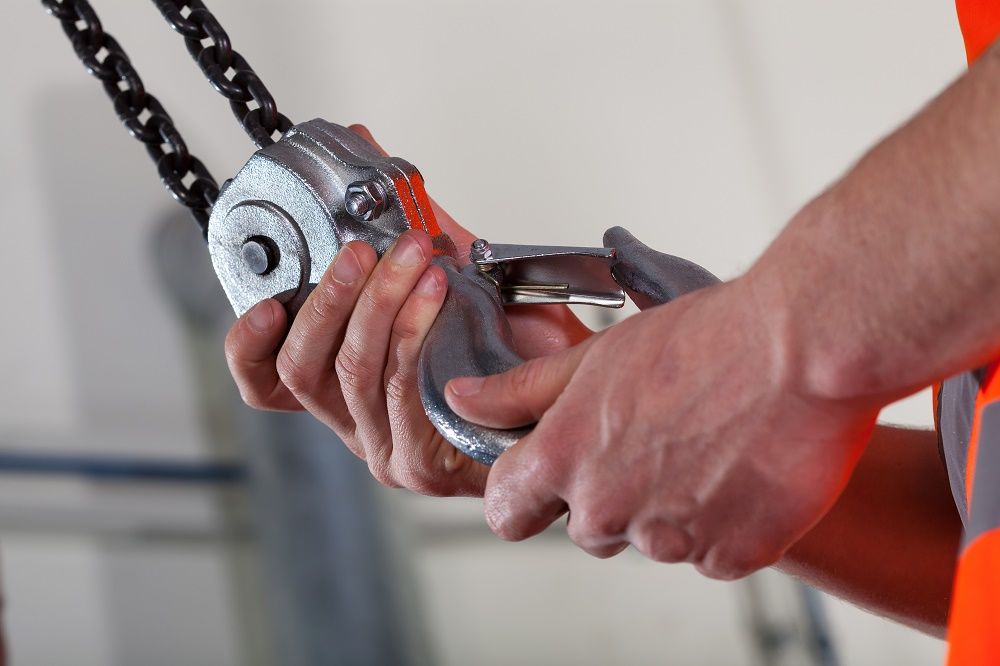
Phone (02) 4964 9406
Mobile 0405 758 535
Email training@allclass.net.au
Address 10 Kilcoy Drive, Tomago NSW 2322

When it comes to dogging and rigging, there’s a huge range of lifting equipment available on the market — chain slings, wire rope slings, shackles, chain blocks, creeper winches and more — from an even wider range of international manufacturers. With this in mind, it is unacceptable to blindly rely on the manufacturer’s assertion that the equipment complies with lifting equipment standards in Australia.
Most Australian lifting and rigging standards are set out by the ME-025 Lifting Tackle Committee at Standards Australia, i.e. our top-level, non-government, not-for-profit standards organisation. These standards were developed for Australia’s benefit — not only do they allow us to compete on an international scale, but it also contributes to the community’s demand for a safe, sustainable environment.
It’s crucial to inspect your lifting equipment on a regular basis to ensure your team is working safely and within Australian lifting and rigging standards. Below, we have highlighted all of the individual standards and provided additional information about lifting equipment inspections.
| Standard | Description |
| AS 1138 — 2008 | Thimbles for Wire Rope |
| AS 1353.1 — 1997 | Flat Synthetic Webbing Slings Part 1: Product Specification |
| AS 1353.2 — 1997 | Flat Synthetic Webbing Slings Part 2: Care and Use |
| AS 1418.1 — 2002 | Cranes, Hoists and Winches Part 1: General Requirements |
| AS 1418.2 — 1997 | Cranes, Hoists and Winches Part 2: Serial Hoists and Winches |
| AS 1418.3 — 1997 | Cranes, Hoists and Winches Part 3: Bridge, Gantry and Portal Cranes (including Container Cranes) |
| AS 1418.17 — 2002 | Cranes, Hoists and Winches Part 17: Design and Construction of Workboxes |
| AS 1418.18 — 2001 | Cranes, Hoists and Winches Part 18: Crane Runways and Monorails |
| AS 1666.1 — 2009 | Wire Rope Slings Part 1: Product Specification |
| AS 1666.2 — 2009 | Wire Rope Slings Part 2: Care and Use |
| AS 2076 — 1996 | Wire Rope Grips for Non-Lifting Applications |
| AS 2089 — 2008 | Sheave Blocks for Lifting Purposes |
| AS 2317.1 — 2018 | Lifting Points Part 1: Collared Eye Bolts and Collared Eye Nuts – Grade 4 |
| AS 2318 — 2006 | Swivels for Lifting Applications |
| AS 2319 — 2001 | Rigging Screws and Turnbuckles |
| AS 2321 — 2014 | Short-Link Chain for Lifting Purposes |
| AS 2359.1 — 2015 | Powered Industrial Trucks Part 1 – General Requirements |
| AS 2550.1 — 2011 | Cranes, Hoists and Winches – Safe Use |
| AS 2740 — 2001 | Wedge Type Sockets |
| AS 2741 — 2002 | Shackles |
| AS 2759 — 2004 | Steel Wire Rope – Use, Operation and Maintenance |
| AS 3569 — 2010 | Steel Wire Ropes – Product Specification |
| AS 3775.1 — 2014 | Chain Slings for Lifting Purposes – Grade T(80) and V(100) Part 1: Product Specification |
| AS 3775.2 — 2008 | Chain Slings for Lifting Purposes – Grade (80) and V(100) Part 2: Care and Use |
| AS 3776 — 2015 | Lifting Components for Grade T(80) and V(100) Chain Slings |
| AS 3777 — 2008 | Shank Hooks and Large Eye Hooks – Maximum 60T |
| AS 3785.4 — 2002 | Underground Mining – Shaft Equipment Part 4: Conveyances for Vertical Shafts |
| AS 3785.7 — 2006 | Underground Mining – Shaft Equipment Part 7: Sheaves |
| AS 3850.1 — 2015 | Prefabricated Concrete Elements Part 1: General Requirements |
| ISO 4309:2007 | Cranes – Wire Ropes — Care and Maintenance, Inspection and Discard |
| AS/NZS 4344 — 2001 | Motor Vehicles — Cargo Restraint Systems — Transport Chain and Components |
| AS 4497 — 2018 | Round slings – Synthetic Fibre |
| AS 4722 — 2009 | Passenger Ropeways and Passenger Conveyors |
| AS 4797 — 2009 | Stainless Steel Chain for Lifting Purposes |
| AS 4991 — 2004 | Lifting Devices |
| AS 1657 — 2018 | Fixed Platforms, Walkways, Stairways and Ladders — Design, Construction and Installation |
| AS 1891.1 — 2007 | Industrial Fall Arrest Systems and Devices – Part 1: Harness and Ancillary Equipment |
| AS 1891.2 — 2001 | Industrial Fall Arrest Systems and Devices – Part 2: Horizontal Lifeline and Rail Systems Supplement 1: Prescribed Configurations For Horizontal Lifelines |
| AS 1891.3 — 1997 | Industrial Fall Arrest Systems and Devices Part 3: Fall Arrest Devices |
| AS 1891.4 — 2009 | Industrial Fall Arrest Systems and Devices |
| AS 1892.1 — 1996 | Portable Ladders Part 1: Metal |
| AS 1892.5 — 2000 | Portable Ladders Part 5: Selection, Safe Use and Care |
| AS 2865 – 2009 | Confined Spaces |

Image: Elevate Lifting
According to Standards Australia, a “competent person” must inspect lifting equipment on a regular basis, tag equipment that can no longer be used and keep a record of all inspections and findings (to be reviewed if an incident occurs).
A “competent person” refers to:
“A person having practical and theoretical knowledge and relevant experience, sufficient to enable that person to detect and evaluate defects and weaknesses that may affect the intended performance of the equipment. In court may be called upon to explain your level of competence. Often a dogger, rigger or height safety trained individual.”
To ensure the person is “competent” enough to perform a lifting equipment inspection, we recommend checking the relevant standard (listed above). Some standards have harsher rules than others around competency.
All equipment is required to be inspected by the competent person operating it before every use. On top of this, there are also registered inspection periods that need to be completed at regular intervals. Below is a table for reference.
| Type of Equipment | Registered Inspection Intervals |
| Soft Slings/FWS | Slings must be inspected by a competent person at intervals no more than three months. |
| Chain Assemblies | Periodic inspections by a competent person. |
| Lashing Chains | Regular inspection by the user. |
| Wire Rope Assemblies | Periodic inspection by a competent person every 12 months (subject to usage). |
| Lifting Clutches | A proof test using a load equal to 1.2 times the WLL shall be conducted and recorded at least every 12 months. |
| Lifting Beams | Lifting devices must be inspected by a competent person at intervals specified by the manufacturer or the competent person. |
| Monorail/Gantry | Every two years within the first six years, then 12 monthly. |
| Harnesses/Lanyards | User inspection before and after each use. Documented inspection every six months by a height safety equipment inspector. |
| Horizontal or Vertical Lifelines (Webbing or Fibre Ropes) | Documented inspection 6 monthly by height safety equipment inspector. |
| Horizontal or Vertical Lifelines (Steel Rope or Rail) | Frequency of inspection by height safety equipment inspector as recommended by the manufacturer (maximum of five yearly). Otherwise, documented inspections every 12 months. |
| Anchors — Chemical & Mechanical (if Not Secured with a Nut) | Proof load yearly (must be documented). |
| Anchors — Chemical & Mechanical (if Secured with a Nut) | No proof load but the structure needs to be tested or engineer certified. |
| Type 1 Fall Arrestors | Rope grabs, lad safe, lifeline. Annual documented Inspection by height safety equipment Inspector. |
| Type 2 Fall Arrestors | Self-retracting lifelines. Six monthly documented inspections by a height safety equipment specialist. Service as recommended by the manufacturer to a maximum of 5 years (otherwise every 12 months). |
| Type 3 Fall Arrestors | Self-retracting lifelines with a winch. Six monthly documented inspections by a height safety equipment specialist. Service as recommended by the manufacturer to a maximum of 5 years (otherwise every 12 months). |
At All Class Training, we offer dogging and rigging training to ensure that you are not only able to work safely and efficiently but also so you can choose and inspect lifting equipment effectively. During both the practical and theoretical components of our training, we will ensure you know how to identify equipment that is no longer safe for use, how to document this and the next steps in line with lifting equipment standards in Australia.
Book dogging and rigging courses with All Class Training today. We offer basic and intermediate rigging courses as well as standard dogging courses all month, every month.
Feature Image: NATA